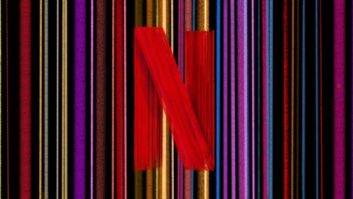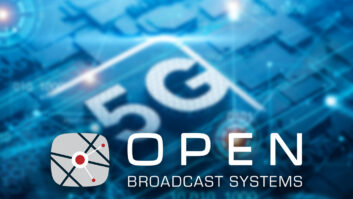High dynamic range (HDR) is making rapid progress in replacing legacy standard dynamic range (SDR) as the next generation of TVs, streaming services and broadcast technologies enter the market. HDR is already a mainstream element in the development of episodic and cinematic productions. Significant new developments in the conversion of SDR content libraries to HDR along with the distribution of live broadcasts –especially sports – are opening new frontiers of opportunity for the industry. According to Allied Market Research, the high dynamic range market is projected to reach $126.74 billion (US) by 2030.
To learn more about the impact high dynamic range is making on live, episodic and cinematic production, and to discuss the company’s Advanced HDR solutions, TVBEurope has been given access to Technicolor’s discussion with Nick Mitchell, media solutions specialist at InterDigital and member of the Hollywood Professional Association.
What role are emerging technologies like HDR playing in delivering enhanced experiences in the image and picture quality in live broadcasts, theatrical releases, episodic content… and even video games?
High dynamic range – and many of the immersive formats we’re seeing emerge in the industry – amplify the creative palette. This ultimately results in a more immersive and impactful experience.
HDR specifically enables a broader range of colours and brightness offering new ways to control the viewing experience much more succinctly on screen. This means the contrast between the darkest darks and the brightest whites delivers a more lifelike, vibrant image. The greater nuance in bright and dark shades helps preserve detail, so the experience is far more immersive, engaging and life-like for consumers.
Does the introduction of high dynamic range provide any points of differentiation for content owners and consumers?
For consumers, it absolutely provides a point of differentiation. When it comes to HDR, seeing really is believing. Once consumers have experienced HDR, it is very difficult for them to go back to standard dynamic range. Today, more and more consumers are hungry for premium in-home entertainment experiences, and HDR is increasingly seen by consumers as integral to meeting their growing expectations.
This is now recognised by most content owners, which is why it is imperative that we give consumers as many opportunities to see high dynamic range and really understand its value within the premium entertainment space.
What do streaming service providers and other content distributors need to consider as they explore their options in deploying HDR in the streaming/broadcast entertainment environment?
It is important to understand the available content and the devices content providers and developers want to target. For studios with large libraries of material, ensuring that an HDR grade is available on all of the content in their portfolios can be incredibly costly and time-consuming if it is not approached in a strategic manner.
Another critical factor to consider while conducting these conversions is the ability to preserve the creative intent of the content. If the conversions from SDR to HDR are being performed in the context of advertising supported delivery environments, it is also critical to take into account the intent of any brands or advertisers who may play a role in the financing or the budgeting of that content.
In other words, an advertiser may not be thrilled with the unintentional impression a standard dynamic range ad makes when placed within an HDR offering because the contrast is pretty dramatic. Not many brands and advertisers are making HDR ads, so this is a valid concern.
You’re associated with Advanced HDR by Technicolor; how does it provide content owners and production teams, including playback distributors, with an efficient path to success when delivering high dynamic range to the viewing public?
Advanced HDR by Technicolor, which features a unique intelligent tone management (ITM) toolset, enables incredibly high quality, dynamic, and real-time expansion of standard dynamic range to high dynamic range that preserves that creative and brand intent.
Known as the SL-HDR format in the technical and standards-setting communities, Advanced HDR by Technicolor provides broadcasters and distributors with a single inventory distribution format to serve both SDR and HDR devices without compromises, saving infrastructure and delivery costs along the way. By using the dynamic meta-data capabilities that are included in the solution, a single stream can deliver both SDR and HDR without compromising the artistic intent of the content creators or producers.
This makes Advanced HDR by Technicolor a key part of a strategic approach to ensuring that the highest quality productions maintain their integrity across today’s heterogeneous environment, which consists of SDR and HDR TVs and other devices in the market.
I think it’s really important for leaders in the creative community to understand that HDR is one of those elements of entertainment technology that will help the industry drive an increase in higher-value impression customers.
As the creative and technology community gathers at the Hollywood Professional Association (HPA) conference in Palm Springs, what is your message to them?
Over the past few years we have seen the broadcast segment of the entertainment industry make tremendous progress in enhancing the content that is experienced by consumers. A lot of work has been done globally by groups such as the European Telecommunications Standards Institute (ETSI) and the Advanced Television Systems Committee (ATSC) to integrate SL-HDR formats into next-generation protocols that will enhance the viewing experience of broadcast content.
Now we’re focusing on the streaming and app delivery side of things. During HPA we are planning to have conversations with streamers, advertisers – really anybody that is using streaming technology – to help people understand where Advanced HDR by Technicolor can be put into place to enhance the services they offer and the value they deliver to consumers around the world.
For more information, visit: https://bit.ly/AdvancedHDRbyTechnicolor.







